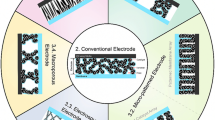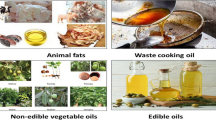Abstract
Catalysts are essential for the generation of energy carriers like hydrocarbon fuels, hydrogen, and electrical current. The performance of catalysts can be related to their nanostructure (i.e., size and shape) and composition. To rationally design catalysts by tuning these properties, they should be measured in a meaningful way using surface-sensitive spectroscopic tools under reaction conditions. In this perspective, we provide case histories of recently published research aimed at understanding these properties using a spectroscopic strategy under reaction conditions. We limit this perspective to studies whose main focus was to understand how the nanostructure and composition impact the active phase and/or efficiency of catalysts for the generation and conversion of energy carriers. We discuss studies of a Pd/Ga2O3 catalyst for the generation of hydrogen fuel from methanol and water, a PtMo catalyst for the generation of hydrogen fuel from biomass and water, Pt/Rh catalysts for the conversion of hydrogen into electrical current, a CeO x catalyst for the conversion of hydrogen into electrical current, and Fe and Co/CoPt catalysts for the generation of hydrocarbon fuel from carbon monoxide and hydrogen. Each study emphasizes how the use of spectroscopic tools under reactive conditions is beneficial for making rational decisions for improving catalysts. The studies demonstrate how different synthesis methods dictate the nanostructure and distribution of alloy components in the catalyst, certain pretreatment conditions create the active surface phase, while reactions and post-treatments can destroy it, and the nanostructure and composition change the electronic structure and alter the selectivity and activity.






Similar content being viewed by others
References
Basic Resarch Needs: Catalysis for Energy. United States Deparment of Energy, 2007
Tao F et al (2010) Break-up of stepped platinum catalyst surfaces by high CO coverage. Science 327(5967):850–853
Zhu ZW et al (2012) Formation of nanometer-sized surface platinum oxide clusters on a stepped Pt(557) single crystal surface induced by oxygen: a high-pressure STM and ambient-pressure XPS study. Nano Lett 12(3):1491–1497
Tao F et al (2008) Reaction-driven restructuring of Rh–Pd and Pt–Pd core–shell nanoparticles. Science 322(5903):932–934
Renzas JR et al (2011) Rh1−x Pd x nanoparticle composition dependence in CO oxidation by oxygen: catalytic activity enhancement in bimetallic systems. Phys Chem Chem Phys 13(7):2556–2562
Tao F et al (2009) Reaction-driven restructuring of bimetallic nanoparticle systems. Abstr Pap Am Chem Soc 237:833
Dietrich PJ et al (2012) Aqueous phase glycerol reforming by PtMo bimetallic nano-particle catalyst: product selectivity and structural characterization. Top Catal 55(1–2):53–69
Haghofer A et al (2012) In situ study of the formation and stability of supported Pd2Ga methanol steam reforming catalysts. J Catal 286:13–21
Zhang C et al (2012) Multielement activity mapping and potential mapping in solid oxide electrochemical cells through the use of operando XPS. ACS Catal 2(11):2297–2304
Friebel D et al (2012) Balance of nanostructure and bimetallic interactions in Pt model fuel cell catalysts: in situ XAS and DFT study. J Am Chem Soc 134(23):9664–9671
de Smit E et al (2011) On the surface chemistry of iron oxides in reactive gas atmospheres. Angew Chem Int Ed 50(7):1584–1588
Zheng F et al (2011) In situ X-ray absorption study of evolution of oxidation states and structure of cobalt in Co and CoPt bimetallic nanoparticles (4 nm) under reducing (H-2) and oxidizing (O-2) environments. Nano Lett 11(2):847–853
Maris EP, Davis RJ (2007) Hydrogenolysis of glycerol over carbon-supported Ru and Pt catalysts. J Catal 249(2):328–337
Zhang L et al (2012) Correlation of Pt–Re surface properties with reaction pathways for the aqueous-phase reforming of glycerol. J Catal 287:37–43
Chia M et al (2011) Selective hydrogenolysis of polyols and cyclic ethers over bifunctional surface sites on rhodium–rhenium catalysts. J Am Chem Soc 133(32):12675–12689
Zheng F et al (2012) In situ study of oxidation states and structure of 4 nm CoPt bimetallic nanoparticles during CO oxidation using X-ray spectroscopies in comparison with reaction turnover frequency. Catal Today 182(1):54–59
Bayer A et al (2006) Electronic properties of thin Zn layers on Pd(111) during growth and alloying. Surf Sci 600(1):78–94
Haghofer A et al (2012) Who is doing the job? Unraveling the role of Ga2O3 in methanol steam reforming on Pd2Ga/Ga2O3. ACS Catal 2(11):2305–2315
DeCaluwe SC et al (2010) In situ characterization of ceria oxidation states in high-temperature electrochemical cells with ambient pressure XPS. J Phys Chem C 114(46):19853–19861
Stamenkovic VR et al (2007) Improved oxygen reduction activity on Pt3Ni(111) via increased surface site availability. Science 315(5811):493–497
Norskov JK et al (2004) Origin of the overpotential for oxygen reduction at a fuel-cell cathode. J Phys Chem B 108(46):17886–17892
Biloen P, Sachtler WMH (1981) Mechanism of hydrocarbon synthesis over Fischer–Tropsch catalysts. Adv Catal 30:165–216
Davis BH (2001) Fischer–Tropsch synthesis: current mechanism and futuristic needs. Fuel Process Technol 71(1–3):157–166
Gaube J, Klein HF (2008) Studies on the reaction mechanism of the Fischer–Tropsch synthesis on iron and cobalt. J Mol Catal A Chem 283(1–2):60–68
Inderwildi OR, Jenkins SJ, King DA (2008) Fischer–Tropsch mechanism revisited: alternative pathways for the production of higher hydrocarbons from synthesis gas. J Phys Chem C 112(5):1305–1307
Casci JL, Lok CM, Shannon MD (2009) Fischer–Tropsch catalysis: the basis for an emerging industry with origins in the early 20th Century. Catal Today 145(1–2):38–44
van Santen RA et al (2011) Structure sensitivity of the Fischer–Tropsch reaction; molecular kinetics simulations. Catal Sci Technol 1(6):891–911
Li S et al (2001) Effects of Zn, Cu, and K promoters on the structure and on the reduction, carburization, and catalytic behavior of iron-based Fischer–Tropsch synthesis catalysts. Catal Lett 77(4):197–205
Acknowledgments
The authors acknowledge financial support from the Director, Office of Basic Energy Sciences, Materials Sciences and Engineering Division, of the U.S. Department of Energy under Contract No. DE-AC02-05CH11231.
Author information
Authors and Affiliations
Corresponding author
Rights and permissions
About this article
Cite this article
Michalak, W.D., Somorjai, G.A. Catalysis in Energy Generation and Conversion: How Insight Into Nanostructure, Composition, and Electronic Structure Leads to Better Catalysts (Perspective). Top Catal 56, 1611–1622 (2013). https://doi.org/10.1007/s11244-013-0096-0
Published:
Issue Date:
DOI: https://doi.org/10.1007/s11244-013-0096-0




